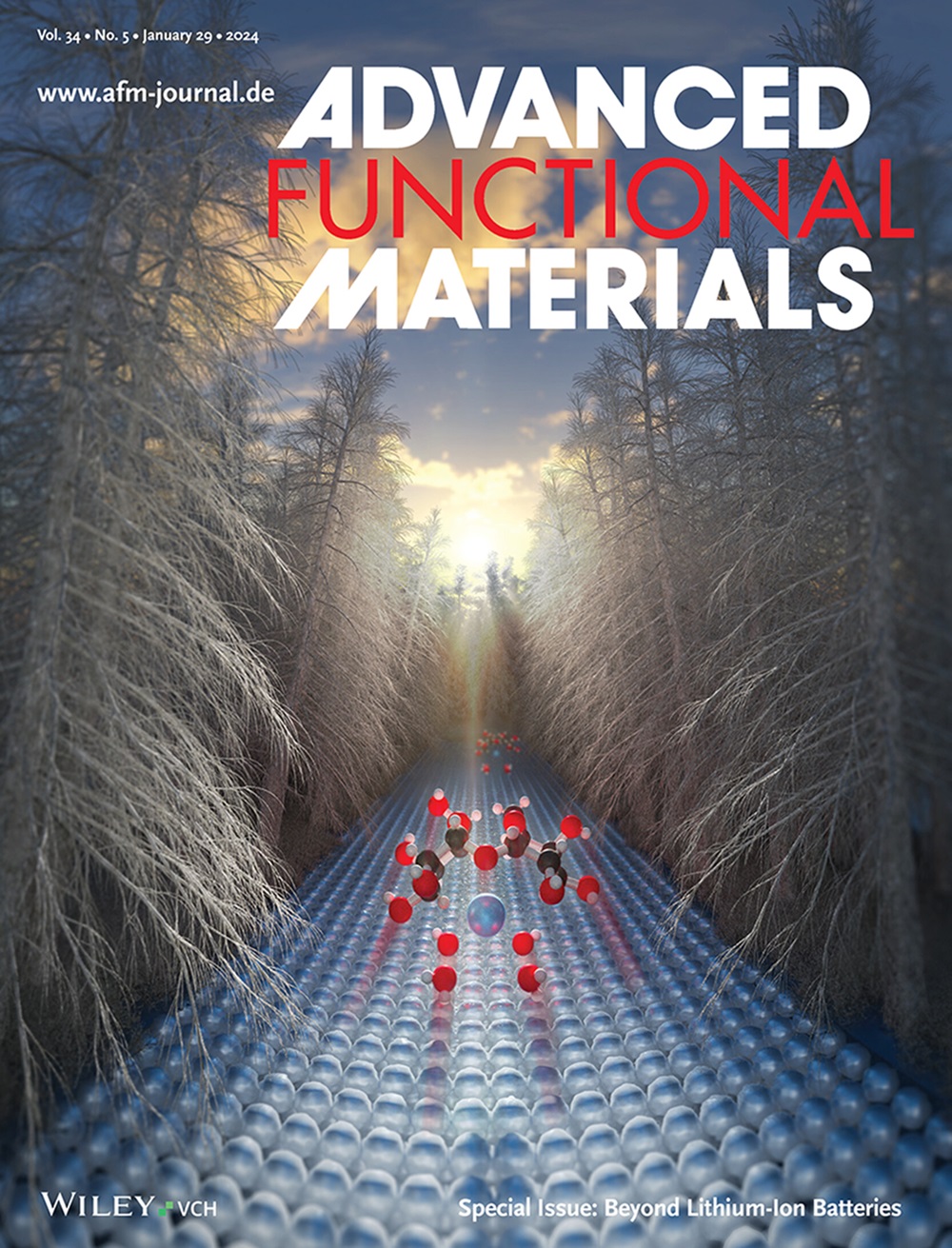Bidirectional Temperature-Responsive Thermochromic Hydrogels With Adjustable Light Transmission Interval for Smart Windows
IF 18.5
1区 材料科学
Q1 CHEMISTRY, MULTIDISCIPLINARY
引用次数: 0
Abstract
Thermochromic smart windows have been widely developed for solar regulation to save building energy. However, most current smart windows still exhibit a single responsiveness to a specific temperature, which is not conducive to daytime energy saving or nighttime privacy protection. Herein, a low-temperature response is achieved by pre-initiation of the monomer acrylamide (AAm) and acrylic acid (AA) in the synthesis of P(AAm-co-AA). Then, N-isopropyl acrylamide and AAm are introduced into P(AAm-co-AA) to form a pre-polymerized precursor solution. The liquid precursor solution can be encapsulated within two quartz glasses and synthesized in situ to prepare smart windows, which exhibit a high visible light transmittance of 84.4%, excellent solar modulation of 69.5%, and bidirectional temperature responsiveness (cold and hot). In addition, the upper critical solution temperature and the lower critical solution temperature of the hydrogel and the light transmission interval between the two temperatures can be flexibly adjusted to adapt to different climates and individual user needs. The designed smart window maintains a high light transmission within the human body's comfort temperature range. The bidirectional temperature response window achieves the dual functions of energy saving and privacy protection, making it an ideal smart window candidate with good prospects for practical applications.

用于智能窗户的具有可调透光间隔的双向温度响应型热致变色水凝胶
热变色智能窗户已被广泛开发用于调节太阳光以节约建筑能耗。然而,目前大多数智能窗户仍然表现出对特定温度的单一响应,不利于白天节能或夜间隐私保护。在此,通过在 P(AAm-co-AA)的合成过程中预先引发单体丙烯酰胺(AAm)和丙烯酸(AA)来实现低温响应。然后,将 N-异丙基丙烯酰胺和 AAm 引入 P(AAm-co-AA),形成预聚合前体溶液。液态前驱体溶液可封装在两个石英玻璃中,并在原位合成制备出智能窗户,其可见光透过率高达 84.4%,太阳光调制率高达 69.5%,并具有双向温度响应性(冷和热)。此外,水凝胶的上临界溶液温度和下临界溶液温度以及两个温度之间的透光间隔可以灵活调整,以适应不同的气候条件和用户的个性化需求。所设计的智能窗口可在人体舒适温度范围内保持较高的透光率。双向温度响应窗实现了节能和保护隐私的双重功能,是一种理想的智能窗,具有良好的实际应用前景。
本文章由计算机程序翻译,如有差异,请以英文原文为准。
求助全文
约1分钟内获得全文
求助全文
来源期刊

Advanced Functional Materials
工程技术-材料科学:综合
CiteScore
29.50
自引率
4.20%
发文量
2086
审稿时长
2.1 months
期刊介绍:
Firmly established as a top-tier materials science journal, Advanced Functional Materials reports breakthrough research in all aspects of materials science, including nanotechnology, chemistry, physics, and biology every week.
Advanced Functional Materials is known for its rapid and fair peer review, quality content, and high impact, making it the first choice of the international materials science community.
 求助内容:
求助内容: 应助结果提醒方式:
应助结果提醒方式:


